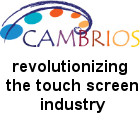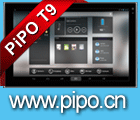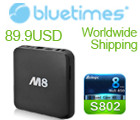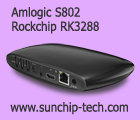High resolution photo merges 8 pictures (using a trick with the IBIS motor) into a giant resolution photo and Panasonic’s new HLG Photo mode is a new format to create HDR photography that can be viewed on any HLG compliant display. The display does not flip out and Panasonic is not yet demonstrating their AI contrast based autofocus performance. More specs will be announces up until the release date which is March 2019, the S1 and S1R are targetted more towards photography.
LAPSCREEN with faytech, 12.5″ Type-C Display, runs off DP phone/laptop/anything
Michél Haese shows LAPSCREEN manufactured by faytech. This video also features Arne Weber, the managing founder of faytech. Here demonstrating Lapscreen with a Huawei P20, using the Smartphone’s CPU/Memory?Connectivity and Battery to power the LAPSCREEN with its 12.5” FHD display, available both non-touch for around $200 and touch version for about $300, shipping in January. The concept is for Lapscreen to be so thin and lightweight it can fit inside an A4-envelope. LAPSCREEN displays the Huawei P20 either in work station mode with all the office tools or one can play any mobile games on a large 12.5” screen instead of the display of a tiny mobile phone. With just around 5W power consumption, the mobile phone’s battery is enough to also run the LAPSCREEN for several hours on a charge, there is also a PD Power Delivery port on the Lapscreen to power the Lapscreen and charge the mobile phone at the same time.
Michél also presents the set up of using LAPSCREEN on different macbooks, showing how one can connect up to 4 LAPSCREENS to just one macbook. There is also an HDMI input on every LAPSCREEN, to connect any HDMI source, any media player, notebook, WiFi/Miracast-dongle, even game consoles like the Nintendo Switch or the iPhone via a lightning to HDMI-cable are perfectly presented on the LAPSCREEN too.
$100 Lapdock on Indiegogo
Now crowdfunding the Lapdock project on Indiegogo at http://igg.me/at/lapdock starting at $100. The future of Laptops will not have a powerful CPU in them but will be modular when you buy them, they can be powered by your phone, or you can buy a small compact ARM Powered internal or external Type-C Stick to run them off of. Laptops are all about getting a great keyboard, mouse and display, but the CPU, Memory, Connectivity, those things can be swapped according to progress in the industry. I will be posting updates on this project at http://Lapdock.net and on the Updates tab at http://igg.me/at/lapdock if this project gets funded by at least $100 thousand, then the suppliers in Shenzhen China will be able to deliver the Lapdock at this price. If Lapdocks can become a larger success with a lot of demand then prices will be able to reach sub-$100 for high quality components, high quality keyboard, mouse pad, display and batteries also that last at least 20 hours on a charge. With a lot of support, this concept will also bring high performance and affordable USB Type-C Sticks to run all sorts of productivity user interfaces based on Android (such as the OXI UI) or Linux OSes or even Microsoft can bring Windows support to the Lapdock. This form factor could also bring the developers who use development boards closer to the mass market consumers, as all work done around the development boards of the future (very compact and affordable USB Type-C Sticks) will directly be able to impact also how end consumers can use devices for actual real work and productivity. The Lapdock will also move Smartphone market more towards their “PC Mode” as Samsung and Huawei already support each their PC Modes, and that is great because Samsung and Huawei are the two biggest Smartphone manufacturers in the world, yet most consumers don’t even know that the PC Mode is there. With Lapdocks, the performance of latest 7nm ARM Processors in phones will be tuned further for multi-window, multi-tasking and for running more advanced productivity apps on Android. 2019 will hopefully be the year where ARM Powered productivity finally reaches mass adoption and the mass market and I think that the Lapdock will be at the center point of that major electronics industry upgrade.
Nanosys Quantum Dots, CEO Jason Hartlove Interview
Nanosys CEO Jason Hartlove talks at Nanosys Silicon Valley headquarters, talks about how his company helped make Quantum Dots a success in the market, where it’s going next. Topics include the story behind the development of the first quantum dot products, the quantum mechanics of how a quantum dot actually works, as well as a look at the long term roadmap for the technology from QDEF and QDOG to QDCC to QDEL displays of the future.
Nanosys has been at the center of the Quantum Dot universe from the beginning. Founded in 2001 by scientists from UC Berkeley and MIT who helped discover the technology in the early 1980’s, Nanosys finally solved the product/market fit for Quantum Dots by developing a simple component called QDEF.
Ten years ago Quantum Dots were a relative unknown. Mostly a research curiosity, the nanotechnology’s unique ability to convert energy into light captivated the imaginations of scientists who envisioned amazing applications in dozens of industries from solar to printing, to displays and to defense. But commercial success remained out of reach, even decades after its initial discovery. Fast forward to today, “Quantum Dot” is a household name and can be found plastered on the packaging for millions of TVs, monitors and tablets around the world.
Mannfroto befree 2-in-1 tripod and monopod with head
Mannfroto tripods are flexible tripods with detachable pieces for use in a variety of situations. Manfrotto provides a wide range of Tripods with Heads. Manfrotto tripods are perfect for a wide array of photography situations. Prices range from 220 Euros and up.
151 megapixel camera: PhaseOne XF IQ4
PhaseOne XF IQ4 150MP is the world’s first 151-megapixel camera. It provides a back side illuminated sensor. The full frame medium format sensors found in XF IQ4 allows capture more data providing more detail than any other camera ever made.
Colorii Factory Tour, WH1 4K USB Type-C hub with wireless charge
Colorii Factory Tour, creates Type-C Hubs in Shenzhen China. Colorii WH1 is a HDMI 4K USB Type-C Hub with wireless charging. It comes with a 2.5D glass top panel and aluminum bottom panel, with 4K@30Hz support on the HDMI output, 2x USB3.0 host, PD3.0 fast charge and data transfer on the Type-C port, and SD, micro SD card reader. All Colorii products are based on private designs with own PCBA layout.
Distributors can contact Colorii for distributor prices here:
Gennie Peng, Sales Manager
sales@colorii.cc
Mobile: +8615013777080 (Wechat/Whatsapp)
http://colorii.cc
Prof Greg Whyte OBE, Physical Activity Exercise Specialist at IDTechEx USA 2018
Prof Greg Whyte OBE is the director of the Centre for Health and Human Performance where they look after all areas of Human health and performance from nutrition to bio mechanics to physiology to medical solutions, a broad spectrum trying to enhance people’s quality of life as well as their length of life. CHHP delivers multidisciplinary care with access to the most advanced treatment by a team of specialists medical specialties including cardiology; respiratory; weight management and metabolism (including diabetes); oncology; orthopaedics; and clinical and performance nutrition and more. In this video, I ask about how to best heal and prevent cancer, heart disease, diabetes, anorexia and more.
AsReader RFID Reader/Writer, Barcode Scanner, SoftScan and more
At the 2018 IDTechEx Show! in Santa Clara, AsReader, Inc. showcases a variety of hardware consisting of RFID Reader/Writers, 1D and 2D Barcode Scanners and an all-new medical grade battery/wireless charging-sled with case. From a pocket-sized AsReader Barcode Scanner to the 10m/32ft long-distance GUN-Type RFID Reader and/or Barcode Scanner, AsReader hardware is compatible with most iOS devices including: iPhone 8 Plus/7Plus/6sPlus/6Plus, iPhone 8/7/6s/6, iPhone SE/5s/5, iPod touch 6th/5th Generation and iPad mini 3/2/1. AsReader’s handheld sleds are available with a white or black case for tracking logistics, healthcare patients & medications, retail inventory cycle-counts &markdowns, and event management. For standard barcode scanner, a UHF RFID Reader/Writer or an HF/NFC Reader, come with a royalty-free SDK with APIs to get connect with other software. AsReader also takes orders for Android users with a small MoQ.
Chromium OS on Snapdragon 845
At Linaro Connect Vancouver 2018, some engineers are showing the Open Source Chromium OS running on the 10nm Qualcomm Snapdragon 845. With some talk on the status of using Freedreno for hardware accelerated GPU support in that Chromium OS demo. Over the past few months this solution has been upstreamed into the mainline kernel, display driver, audio driver, wifi driver, all the connectivity and periferal storage drivers, all to make Chromium OS work on that chipset. Running the 4.18 kernel with very few additional patches, it has hardware accelerated video playback using the open source freedreno driver. This could be a clue towards what I think could be an ultimate ARM Powered Laptop, a Snapdragon 845 Powered Chromebook would be so awesome, with Gigabit LTE, with good ARM single thread and multi-thread performance, with smooth Android and Linux apps supported, perhaps even it would be nice if Microsoft could contribute full x86 and ARM compiled Windows 10 apps support directly on this device.
Ultra96 Xilinx FPGA Development Board with Avnet
Ultra96 is an ARM-based, Xilinx Zynq UltraScale+ MPSoC development board based on the Linaro 96Boards Consumer Edition specification. The processor is a Xilinx Zynq UltraScale+ MP ZU3EG A484 and the RAM is a Micron LPDDR4 memory provides 2GB of RAM in a 512M x 32 configuration. The Ultra96 includes 40-pin 1x 96Boards Low-speed expansion header and 1x 60-pin 96Boards High speed expansion header. The 96Boards’ specifications are open and define a standard board layout for development platforms that can be used by software application, hardware device, kernel, and other system software developers. Ultra96 represents a unique position in the 96Boards community with a wide range of potential peripherals and acceleration engines in the programmable logic that is not available from other offerings.
Shiratech Hackathon at Linaro Connect Vancouver 2018
Shiratech is an Israeli company that creates development boards. Shiratech produces ARM system on modules that cut time to market significantly and reduce project development risk. Shiratech has several new platforms launching soon.
Jilayne Lovejoy, Open Source Attorney at SPDX
Open source technology enables collaboration between projects, but also runs into hurdles with intellectual property and has lawyers to protect it. Jilayne Lovejoy is an internationally recognized lawyer that specializes in open source technologies. Jilayne has a legal background in intellectual property. Jilayne co-leads the Software Package Data Exchange (SPDX) legal team, maintains the SPDX License List, and was a founding member of the OpenChain project.
Shuah Khan, Samsung Open Source
Shua Khan is an experience Linux Kernel developer who works for Samsung Research America. Shua Khan maintains Kernel Selftest framework, USB over IP driver, and cpupower. Shua Khan also contributes IOMMU, and DMA areas. Shua Khan also publishes articles for Samsung opensource blog at https://s-opensource.org
Andrea Gallo, Linaro VP talks open AI with ARM at Linaro Connect Vancouver 2018
Andrea Gallo is VP of the Segment Groups and strategic initiatives at Linaro. The current project he is working on is machine learning for the ARM ecosystem through. These efforts can help reduce fragmentation and forking for open source projects related to deep learning and neural networks. Deep learning, neural networks, and artificial intelligence enable richer more powerful applications on mobile and embedded.
Grant Likely talks EBBR bootloader for ARM
Grant likely is a Senior Software Developer at ARM and a developer for the EBBR project https://github.com/ARM-software/ebbr. The EBBR or Embedded Base Boot Requirements is a specification for bootloaders for ARM based devices. This specification would enable arm based devices to share the same bootloader thus reducing development costs. This would enable the same OS to more easily boot on multiple devices
Shiratech shows LTE, NB-IoT, FPGA, Bosch sensors Mezzanine boards for 96Boards
Shiratech produces ARM system on modules that cut time to market significantly and reduce project development risk. The Mezzanine board by shiratech is a dev board that provides LTE connectivity and can be connected to an arduino or Raspberry Pi. The SPECIFICATIONS are MAX-10 10M04: 256 FPGA package, 4K Logic Elements, 189Kb Block memory, Up to 156KB user FLASH memory, Dual internal configuration, and 178 GPIO FPGA programming using Altera standard programming connector.
Koen Kooi, talks Kodi, Yocto at Linaro Connect Vancouver 2018
Koen Kooi is a release manager at Linaro, developer on the Angstrom project, contributor to the Kodi project, demonstrating Kodi running on a lot of different development boards at Linaro Demo Friday here https://www.youtube.com/watch?v=wipB2_6OKus One of his projects is video playback using accelerated decoding. This accelerated playback can be used in Kodi as well as in HTML5 and web video playback.



